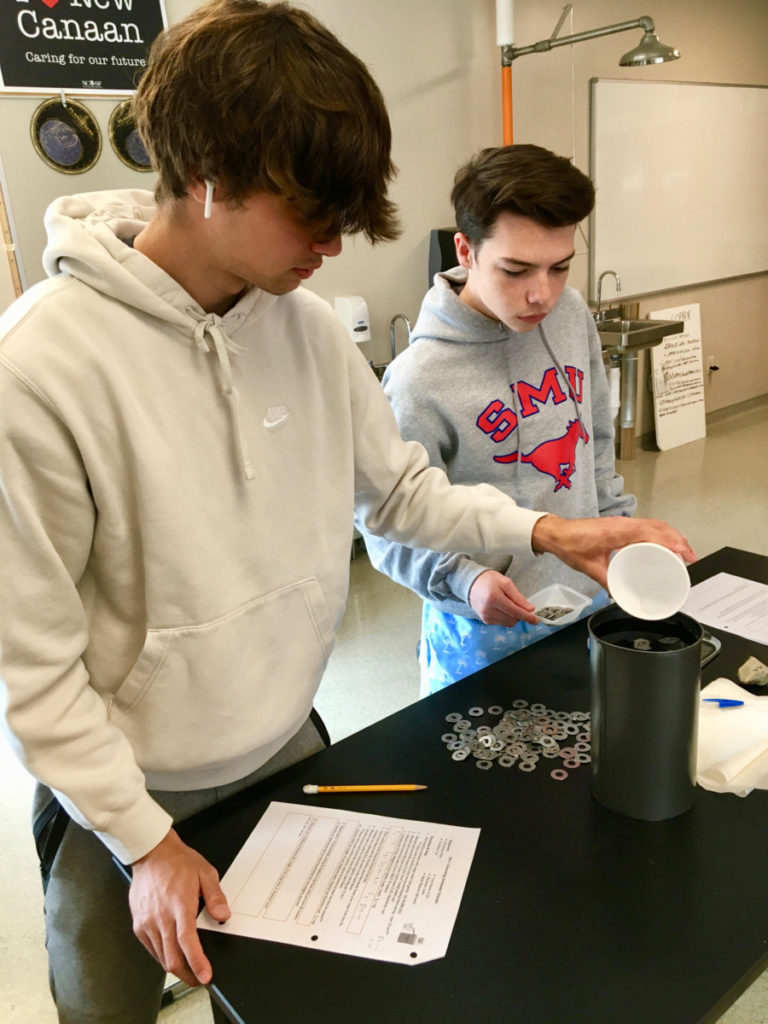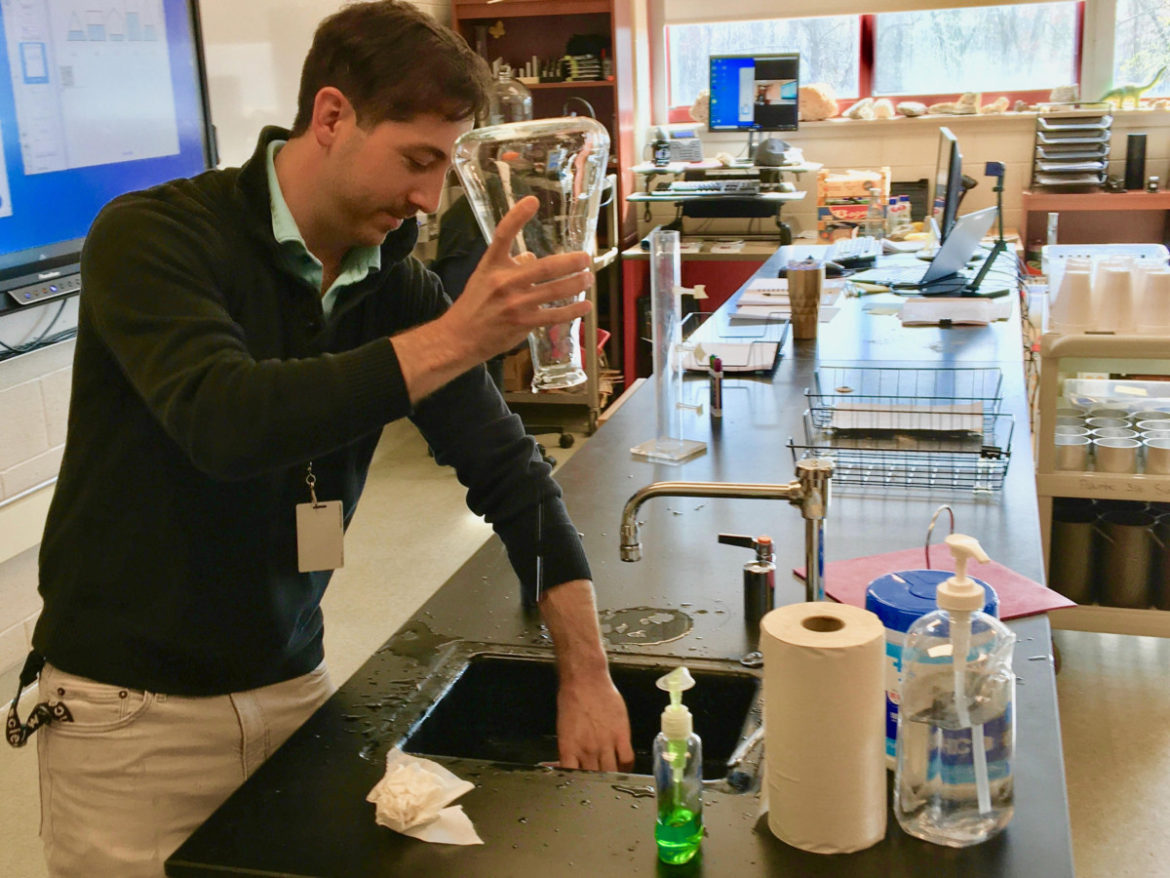Ava Fonss, Editor-in-Chief
@afonsscourant
When selecting science courses for the upcoming school year, many students believe that they are limited to the conventional curriculum: geophysical science, biology, chemistry, and physics. Although there are already many elective courses available, the science department is considering adding additional options, which may include nanotechnology and bioengineering, in accordance with the Next Generation Science Standards (NGSS).
In a February 7 Board of Education meeting, K-8 Science Coordinator Melinda Myers shared the district’s goals regarding the implementation of NGSS for the remainder of the 2021-22 school year. These goals include a revision and review of curriculum in several different science courses in order to further align student learning with the standards. In addition to revising the current curriculum and adding new electives, the science department also plans to reimagine the planetarium.
Adopted by Connecticut in 2015, the standards offer a new approach to the development of science curriculum. “The designers of the Next Generation Science Standards understood that a strong science education equips students with both an ability to make sense of the complex world around them, and provides students with the foundational skills that are necessary to drive future careers and life,” Ms. Myers said.
A major difference between previous science standards and NGSS is the emphasis on three-dimensional learning, which focuses on the integration of three distinct dimensions: scientific and engineering practices, crosscutting concepts, and disciplinary core ideas. “Through three-dimensional learning, the NGSS emphasizes that science is not just a set of isolated facts,” Ms. Myers said. “This awareness enables students to view science as more of an interrelated world of inquiry and phenomenon rather than a static set of science disciplines.”

Physics students perform an experiment to find the weight of a cup filled with washers. They measure the amount of water displaced and apply Archimedes’ Principle.
According to Science Department Chair Michael LeDuc, incorporating new standards into the curriculum has allowed teachers to focus more on individual student development. “The focus of education moves away from the teacher and onto the student,” he said in the Board of Education meeting. “This move towards student-centered instruction and learning is a theme we see across all disciplines.”
When developing activities and lessons, many teachers use the NGSS as guidance. “The standards outline the goals and benchmarks that teachers encompass in their curriculum,” Science Teacher Michael Miceli said. “For the geophysical science curriculum, the staff uses the ‘science and engineering practices’ aspect of the standards to see which of the benchmarks we want to hit within a certain topic. We determine where we want to end with the science and engineering practices, and then determine how we can develop a curriculum that encompasses those practices.”
As a teacher of both geophysical science and physics, Mr. Miceli incorporates the standards for each course in different ways. “The range of a student’s academic ability makes a teacher pivot on how much they can dig into specific areas of the standards, and I often have to determine how much my students are able to handle without the curriculum becoming overwhelming,” he said. “In my physics course, for example, I can hit on more of the mathematical and computational thinking skills as well as conceptual understanding. With my geophysical science students, I tend to focus more on developing models.”
Mr. Miceli was able to gain experience with the standards prior to joining the faculty. “At the college level, schools are doing a lot within courses to prepare teachers for implementing NGSS,” he said. “I came in already knowing a lot about the standards, maybe more than a teacher who has been teaching for twenty or thirty years who hasn’t taken a course to learn about them.”
For faculty members without previous experience, the district provides opportunities to fully understand the standards. “We have different seminars, team meetings, and other professional development opportunities that help us to learn more about the incorporation of NGSS,” Mr. Miceli said. “Overall, we are working on re-working the curriculum to fit more of the NGSS profile. Geophysical science is more at the tail-end of this process, whereas in a class like my physics class, we’re just getting started.”
As part of this curriculum reform, the science department has also been focusing on incorporating more hands-on activities for students. “There’s been a shift in focus less on direct lectures and more on student-centered and project-based learning,” Mr. Miceli said. “To incorporate all of the dimensions of NGSS, the department has been using labs and other activities where students are actively engaged and finding connections.”
In the future, new science electives may help students to further explore their interests. “As a department, we’ve had discussions about providing additional courses based on students’ interests that go beyond the fundamental science curriculum,” Mr. Miceli said. “We’ve been talking about adding a nanotechnology class, which seems to be the hit thing right now. After finding subjects that students are interested in, we can then build a curriculum around those interests.”
Students have already expressed interest in these new elective offerings. “Providing a wider variety of choices allows students to discover what they are truly passionate about, especially in a subject like science,” junior Avery Morawa said. “As someone who has many different scientific interests, I look forward to exploring additional offerings in the future.”




